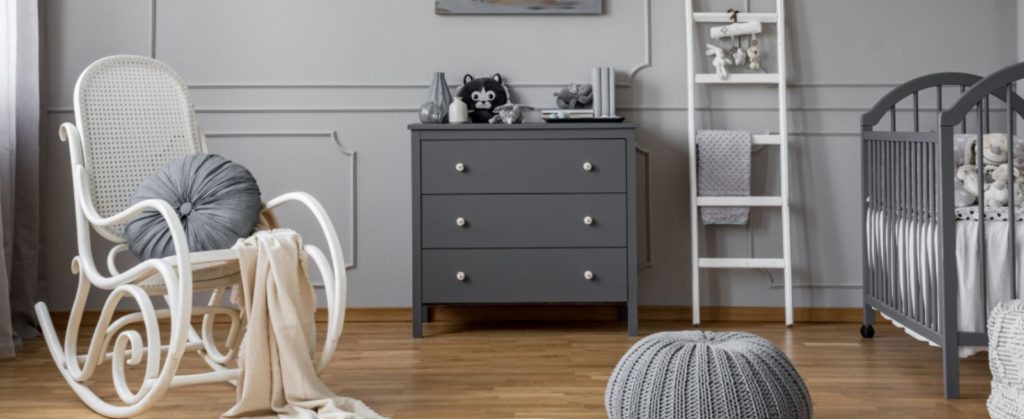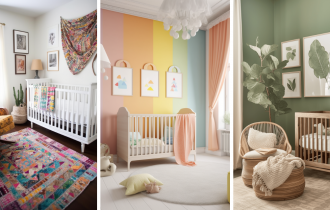The Ultimate Guide to Child-Proofing Your Kid’s Bedroom

Creating a safe and secure environment for your child is of utmost importance, and their bedroom is no exception. Child-proofing your kid’s bedroom ensures their well-being and provides peace of mind for parents. With the advancement of technology and the availability of child-proofing products, it is now easier than ever to create a safe space for your little one. In this comprehensive guide, we will walk you through the process of child-proofing your kid’s bedroom. From furniture considerations to electrical safety and storage solutions, we’ll help you create a nurturing and hazard-free environment for your child to grow and thrive.
- Choosing Safe and Child-Friendly Furniture
When it comes to furnishing your child’s bedroom, safety should be the top priority. Here are some considerations when selecting furniture:
1.1. Crib Safety
If your child is still using a crib, ensure that it meets current safety standards. Look for cribs that have slats spaced appropriately to prevent entrapment and that come with adjustable mattress heights. Avoid using crib bumpers, as they pose a suffocation hazard.
As pediatrician Dr. Benjamin Spock once said, “Trust yourself. You know more than you think you do.” Trust your instincts and choose a crib that provides a safe and comfortable sleeping space for your child.
1.2. Stable and Secure Furniture
Make sure that all furniture in your child’s bedroom, such as dressers, bookshelves, and nightstands, is stable and securely anchored to the wall. This prevents furniture from tipping over and causing injuries. Use furniture straps or brackets to secure heavy items and keep them out of your child’s reach.
1.3. Non-Toxic Materials
Choose furniture made from non-toxic materials, such as solid wood or low-VOC (volatile organic compounds) finishes. Avoid furniture with sharp edges or small parts that can pose a risk of injury.
- Electrical Safety Precautions
Electrical outlets and cords can be potential hazards for children. Implement the following measures to ensure electrical safety in your child’s bedroom:
2.1. Outlet Covers
Cover all unused electrical outlets with child-proof outlet covers. These covers prevent your child from inserting objects into the outlets and protect them from accidental electric shocks.
2.2. Cord Management
Keep cords of lamps, electronics, and window blinds out of your child’s reach. Use cord organizers or cord concealers to keep them neat and secure. Alternatively, consider cordless options for window blinds to eliminate the risk altogether.
2.3. Night Lights
Night lights are beneficial for providing a comforting ambiance in your child’s bedroom. However, ensure that the night light is child-safe, with no loose parts or accessible batteries.
- Creating a Safe Sleeping Environment
A safe sleeping environment promotes healthy sleep habits and reduces the risk of accidents. Consider the following tips:
3.1. Crib Safety Guidelines
Ensure that your child’s crib meets current safety guidelines. Use a firm mattress that fits snugly into the crib and avoid using soft bedding, pillows, and stuffed animals until your child is older to reduce the risk of suffocation.
3.2. Window Safety
Install window guards or window stops to prevent your child from falling out of open windows. Keep furniture away from windows to discourage climbing.
3.3. Temperature Control
Maintain a comfortable and safe temperature in your child’s bedroom. Use a thermometer to monitor the room temperature and adjust bedding accordingly. Avoid using heavy blankets or bedding that can pose a suffocation risk.
- Organizational Solutions for Safety
Proper organization not only keeps your child’s bedroom tidy but also ensures a safe environment. Consider the following organizational tips:
4.1. Toy Storage
Use child-friendly storage solutions, such as bins, baskets, or toy chests, to keep toys off the floor and minimize tripping hazards. Label storage containers with pictures or words to encourage your child to tidy up independently.
4.2. Clothing Accessibility
Arrange your child’s clothes and accessories in an easily accessible manner. Lower clothing rods or use child-sized hangers to encourage independence in getting dressed while minimizing the risk of falling.
4.3. Secure Heavy Items
Secure heavy items, such as dressers or bookshelves, to the wall to prevent tipping. Store heavier items in the lower drawers or shelves to maintain stability.
Conclusion
Child-proofing your kid’s bedroom is an essential step in creating a safe and nurturing space for your child. By choosing safe and child-friendly furniture, implementing electrical safety precautions, creating a safe sleeping environment, and employing organizational solutions, you can ensure your child’s well-being and provide them with a space to grow and thrive. As child psychologist Dr. Garry Landreth once said, “Children learn as they play. Most importantly, in play, children learn how to learn.” Create a safe bedroom environment where your child can learn, explore, and dream without unnecessary hazards.

